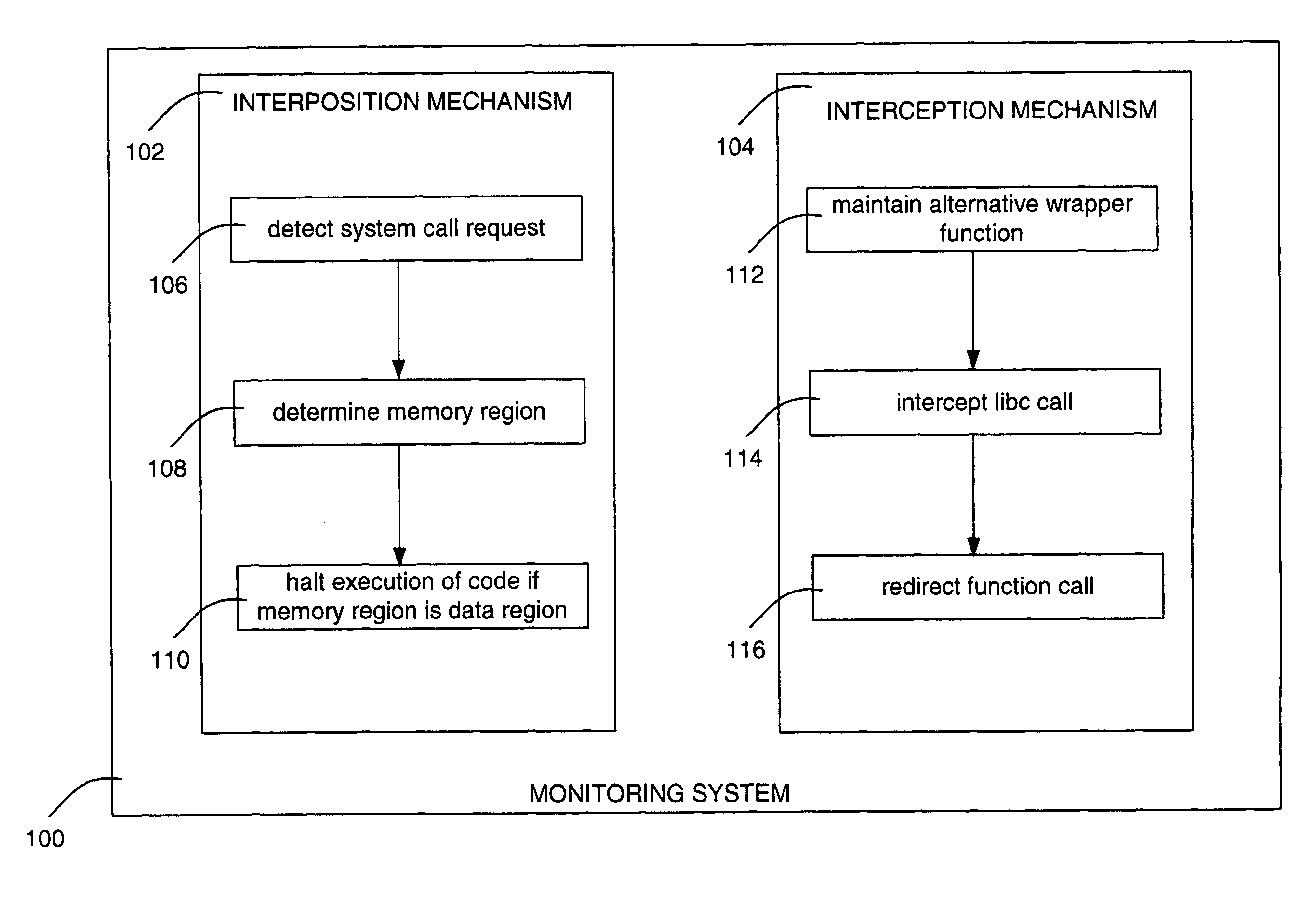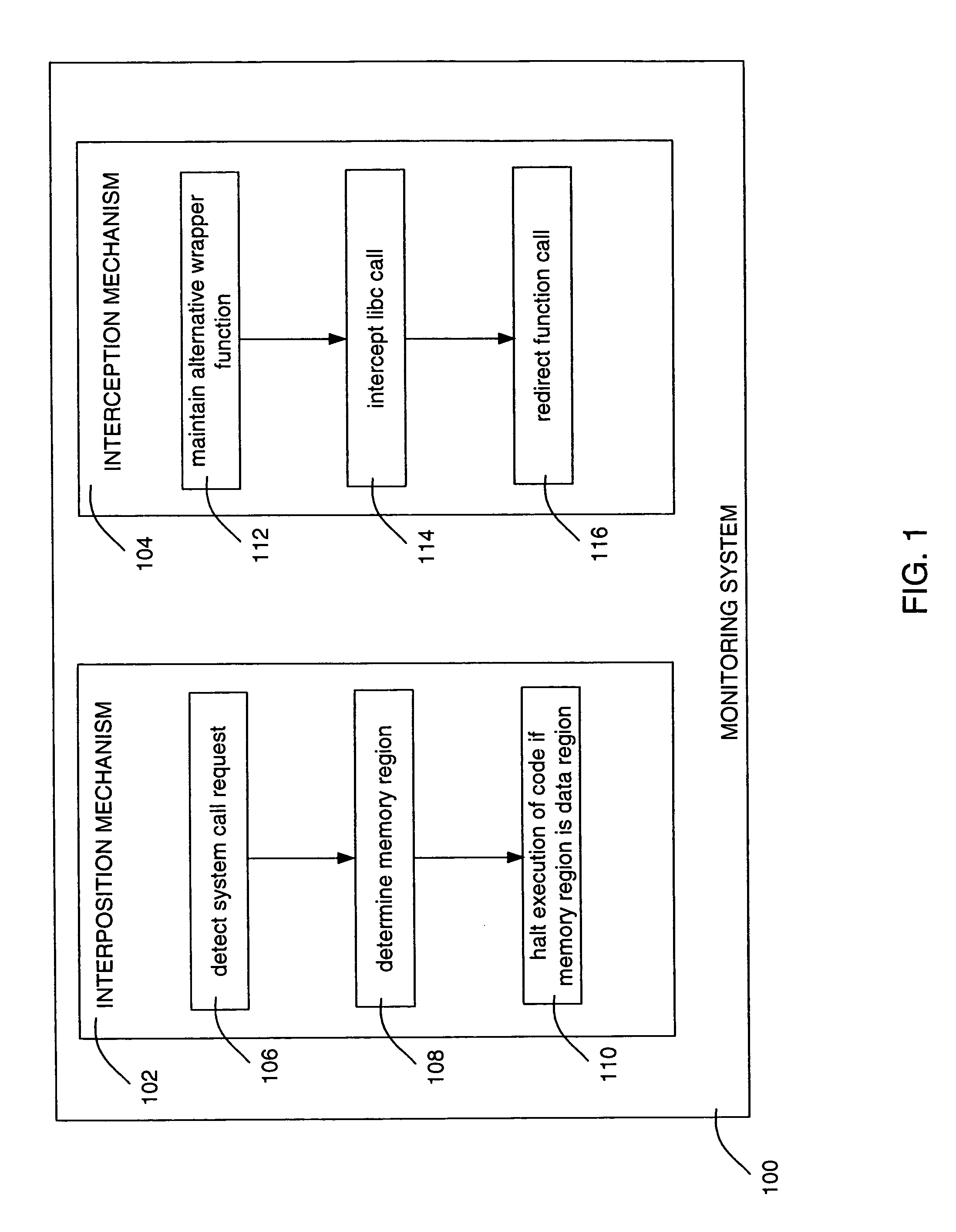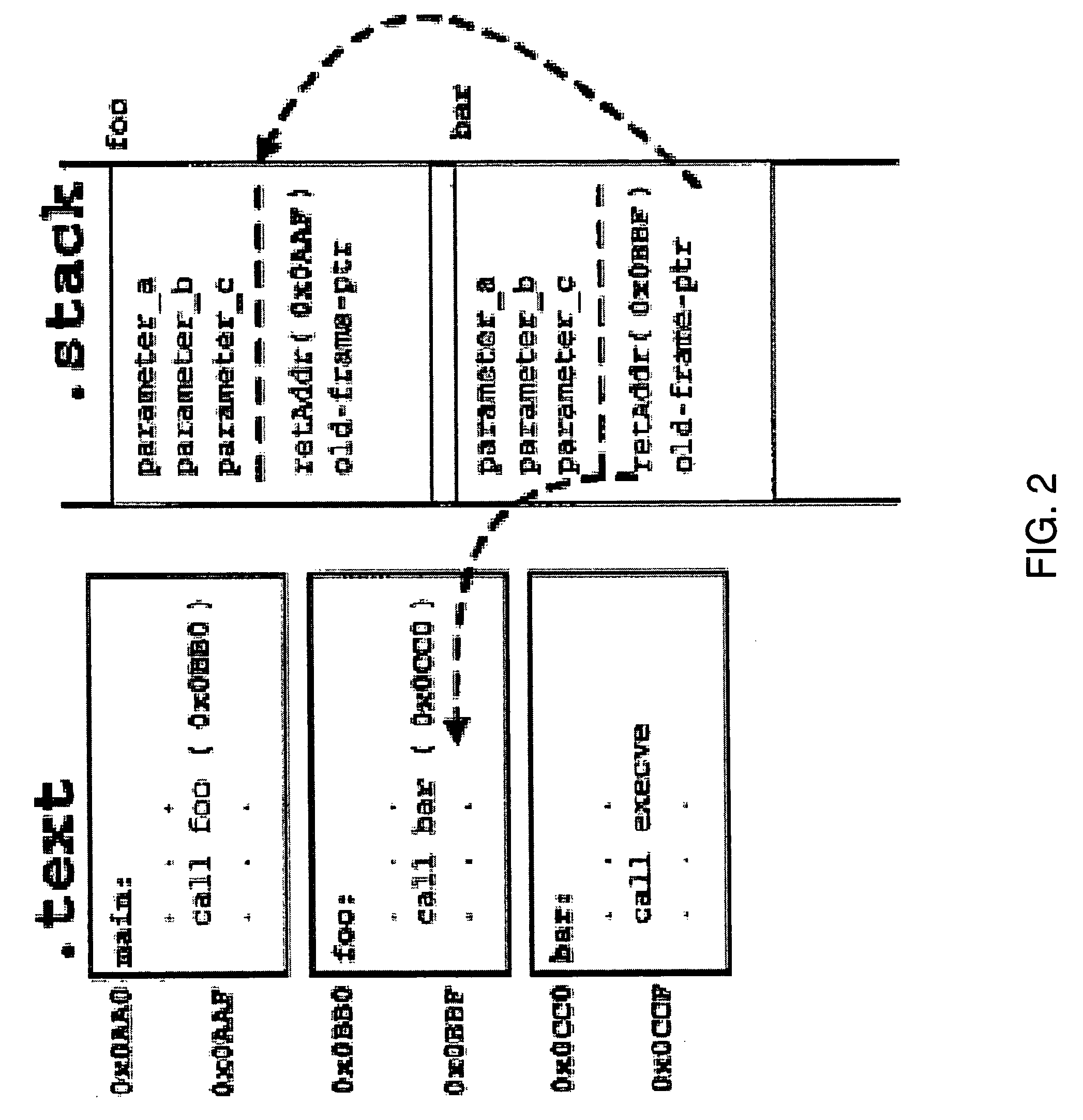Detecting and preventing malcode execution
a malicious code and execution technology, applied in the field of computer systems, can solve the problems of severe memory corruption, buffer overflow, and application developers' failure to explicitly validate the size and/or format of input data
- Summary
- Abstract
- Description
- Claims
- Application Information
AI Technical Summary
Benefits of technology
Problems solved by technology
Method used
Image
Examples
Embodiment Construction
[0041]The embodiments of a system for and method of detecting and halting malicious code execution described herein are based on principles behind traditional, host-based intrusion-detection systems (IDS). Such monitoring systems typically infer program behavior from audit patterns, i.e., the observed sequence of system calls emitted by the running program. By building models of expected and / or permissible system-call invocations for program execution, an IDS can correlate anomalies in the observed audit patterns to malicious activity in the program. The described embodiments also use the system calls emitted by a program as an indication of its behavior, but these embodiments also use specific information associated with the system-call invocations rather than static models to infer malicious activity.
[0042]FIG. 1 shows one embodiment of a monitoring system 100 for detecting and halting execution of malicious code. The monitoring system includes a kernel-based system call interposi...
PUM
 Login to View More
Login to View More Abstract
Description
Claims
Application Information
 Login to View More
Login to View More - R&D
- Intellectual Property
- Life Sciences
- Materials
- Tech Scout
- Unparalleled Data Quality
- Higher Quality Content
- 60% Fewer Hallucinations
Browse by: Latest US Patents, China's latest patents, Technical Efficacy Thesaurus, Application Domain, Technology Topic, Popular Technical Reports.
© 2025 PatSnap. All rights reserved.Legal|Privacy policy|Modern Slavery Act Transparency Statement|Sitemap|About US| Contact US: help@patsnap.com



